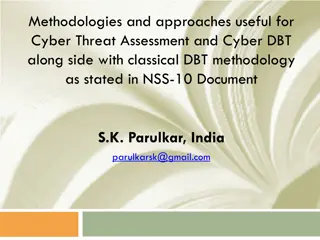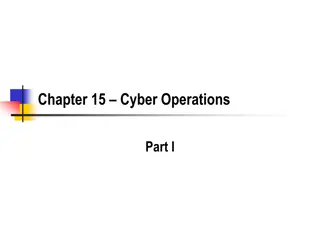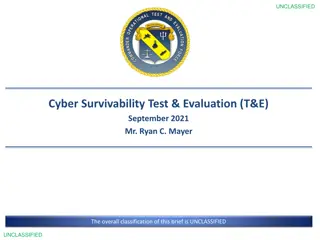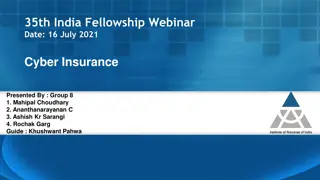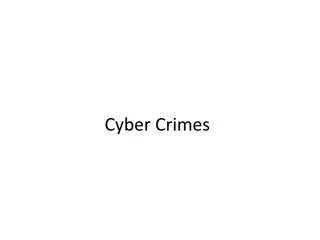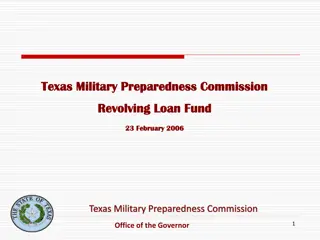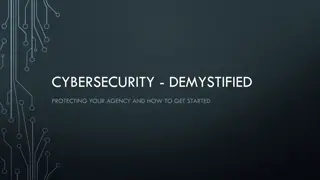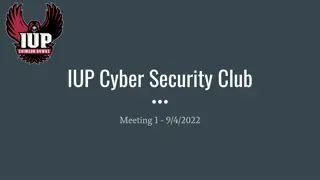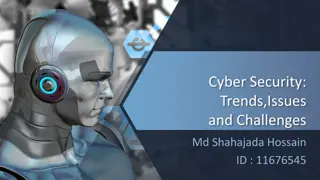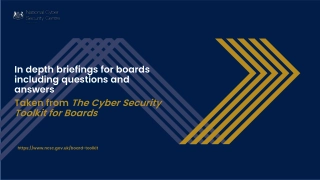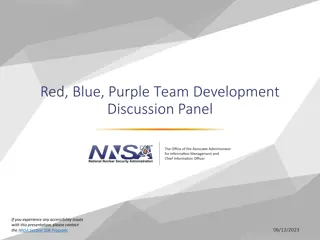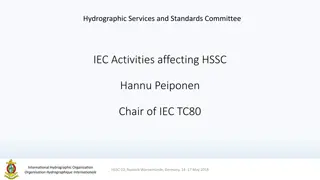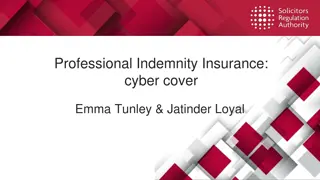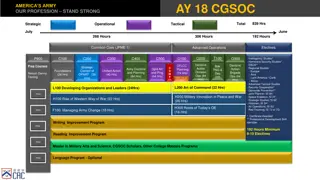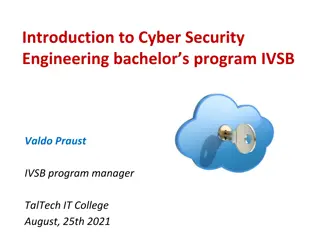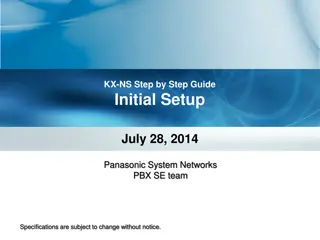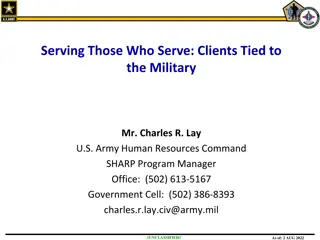Insight into Military Cyber Exercises: Roles, Teams, and Setup
Delve into the world of military cyber exercises from a planner's perspective, exploring roles, teams, and setup. Learn about the Blue and Red Teams, White and Black Cells, as well as the general setup involving multiple organizations. Gain insights into the exercise experience and the different roles played by participants.
Download Presentation

Please find below an Image/Link to download the presentation.
The content on the website is provided AS IS for your information and personal use only. It may not be sold, licensed, or shared on other websites without obtaining consent from the author. Download presentation by click this link. If you encounter any issues during the download, it is possible that the publisher has removed the file from their server.
E N D
Presentation Transcript
Cyber Exercises A Military Perspective
Disclaimer The views expressed are my own and do not reflect the official policy or position of US European Command, Department of Defense, or the U.S. Government.
About Me USC, M.Eng. Computer Science & Engineering Fulbright Scholar Major, US Army Reserves 15 years in military Cyber organizations Cyber Exercises Planner, US European Command
Commercial Persona Owner, NineFX, Inc. Certifications Security+, CompTIA Defensive Cyberspace Operations Engineer Certified Instructor, CSFI Certified Ethical Hacker, EC-Council Exploit Researcher and Advanced Penetration Tester (GXPN), GIAC
Exercise Experience Service Academies/NSA: Cyber Defense Exercise US Strategic Command: Bulwark Defender US European Command: Coalition/Cyber Endeavor US Army Europe: Immediate Response NATO: Coalition Warrior Interoperability eXploration, eXperimentation, eXamination, eXercise (CWIX)
General Setup Usually more than one organization participates Exercise Director Senior leader from sponsoring organization Blue Team Defend and operate systems as their day job Typically have a subset of their organization at the exercise Red Team: Dedicated Penetration Testers White Cell: Often from simulations and exercise groups Black Cell: Cyber specialists and maybe ORSAs
Blue/Red Teams Blue Team Red Team Defenders Attackers Under evaluation Simulates an agressor Executes TTPs Often trained to emulate aggressor TTPs Tactics Stimulates training, tied to objectives Techniques Procedures Injects events into the exercise from the Master Scenario Events List (MSEL)
White/Black Cells White Cell Black Cell Exercise Control (EXCON) Data collection Evaluates outcomes Event correlation Synchronizes injects based on the exercise schedule Provides data for reporting and visualization Collects lessons learned Injects events into the exercise from the Master Scenario Events List (MSEL) Often these responsibilities are merged into the White Cell
Red Team Tools of the Trade Scanning Malicious Traffic Traffic Analysis nmap Scapy hping3 Wireshark Frameworks Metasploit Powershell Empire Cobalt Strike Core Impact Scripting Python Ruby Powershell Bash Other sqlmap Burp Suite AirCrack-NG Kali Linux
Red Teaming vs. Penetration Testing Red Team Penetration Testing Objective-driven Designed to find vulnerabilities Disrupt ability to launch counterattack Loud, scan the most devices in the shortest amount of time Evasion Often on air-gapped networks, can degrade and disable Blue Team systems Don t damage production systems Often integrates social engineering and physical security See Rapid7 Pirates vs. Ninjas discussion https://community.rapid7.com/community/infosec/blog/2016/06/23/penetration-testing-vs-red-teaming-the-age-old-debate-of-pirates-vs-ninja
Vulnerability Assessments Longer Time Period System/Product focused White/Gray/Black Box Testing Rules of Engagement & Written Agreements
Common Attacker TTPs The majority of hacks start with an email Weakest link is user Advanced Persistent Threats (APTs) After exploitation, goal is to maintain access and escalate privileges (root) Reverse shells Command and Control nets Covering your tracks
Offensive Security Penetration Testing / Red Teaming Vulnerability Assessment Exploit Research Tools Development
Exploit Research Local Desktop, mobile or similar applications Often exploits poor memory management You re going to learn assembler Remote Exploits network/server applications SQL Injections, Shell Injects, Cross Site Scripting (XSS), etc. Bug Bounties Contract Gigs CVEs
Traditional Exploit Dev Find Memory Vulnerability Gain Control of EIP Develop Payload Debuggers/Decompilers/Tools gdb WinDBG OllyDBG Immunity lddb Radare2 Hopper IDAPro Metasploit Mona Fuzzers Sulley AFL hongfuzz QuickFuzz




